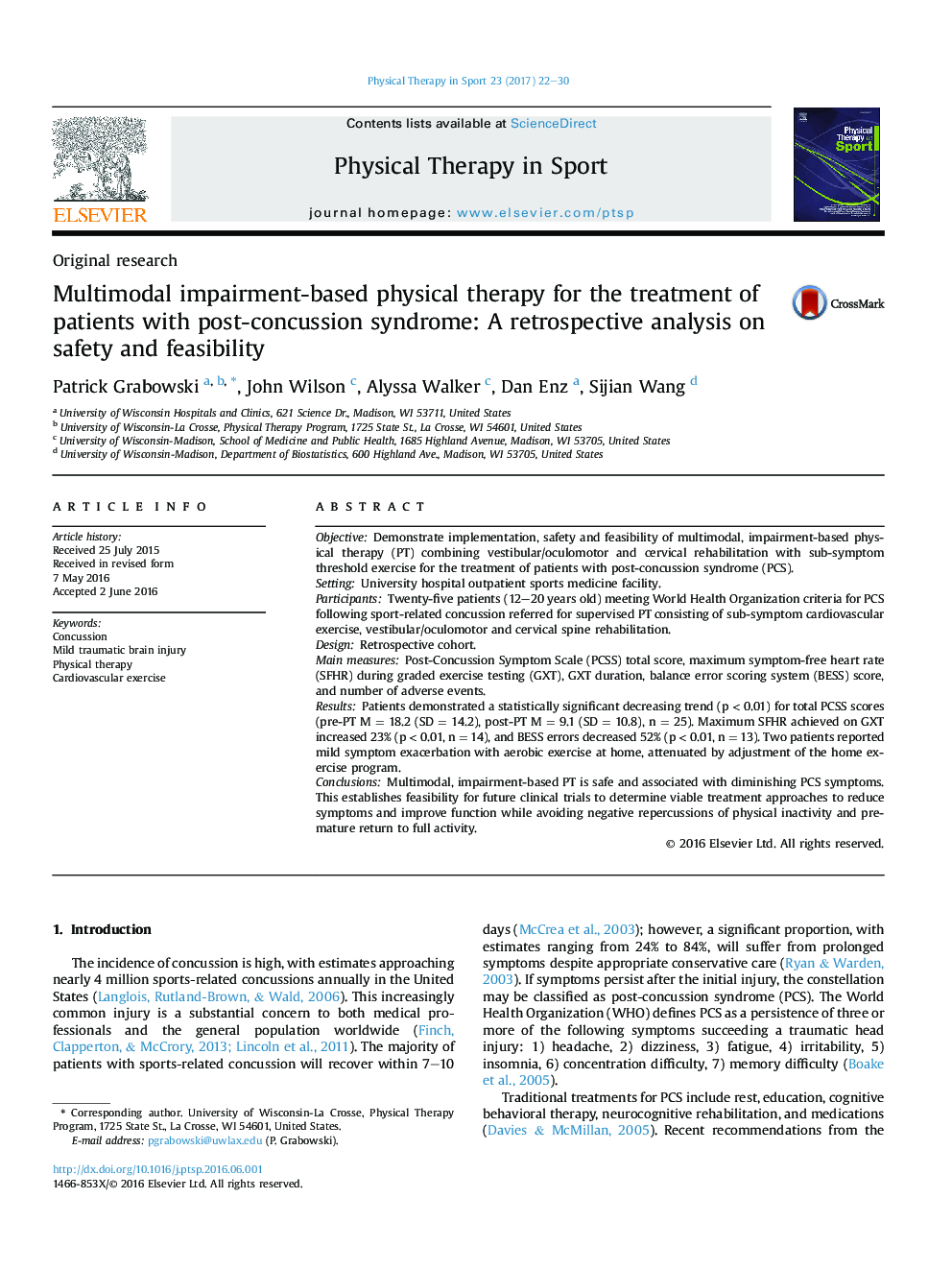| Article ID | Journal | Published Year | Pages | File Type |
|---|---|---|---|---|
| 5873609 | Physical Therapy in Sport | 2017 | 9 Pages |
â¢An impairment-based approach for patients with post-concussion syndrome is safe.â¢Patients improved on average 9 points on the post-concussion symptom scale.â¢Patients improved with exercise tolerance and postural stability.â¢Patients averaged 4 physical therapy visits over approximately 3 months.â¢Classifications are proposed to guide patient education and treatment.
ObjectiveDemonstrate implementation, safety and feasibility of multimodal, impairment-based physical therapy (PT) combining vestibular/oculomotor and cervical rehabilitation with sub-symptom threshold exercise for the treatment of patients with post-concussion syndrome (PCS).SettingUniversity hospital outpatient sports medicine facility.ParticipantsTwenty-five patients (12-20 years old) meeting World Health Organization criteria for PCS following sport-related concussion referred for supervised PT consisting of sub-symptom cardiovascular exercise, vestibular/oculomotor and cervical spine rehabilitation.DesignRetrospective cohort.Main measuresPost-Concussion Symptom Scale (PCSS) total score, maximum symptom-free heart rate (SFHR) during graded exercise testing (GXT), GXT duration, balance error scoring system (BESS) score, and number of adverse events.ResultsPatients demonstrated a statistically significant decreasing trend (p < 0.01) for total PCSS scores (pre-PT M = 18.2 (SD = 14.2), post-PT M = 9.1 (SD = 10.8), n = 25). Maximum SFHR achieved on GXT increased 23% (p < 0.01, n = 14), and BESS errors decreased 52% (p < 0.01, n = 13). Two patients reported mild symptom exacerbation with aerobic exercise at home, attenuated by adjustment of the home exercise program.ConclusionsMultimodal, impairment-based PT is safe and associated with diminishing PCS symptoms. This establishes feasibility for future clinical trials to determine viable treatment approaches to reduce symptoms and improve function while avoiding negative repercussions of physical inactivity and premature return to full activity.
